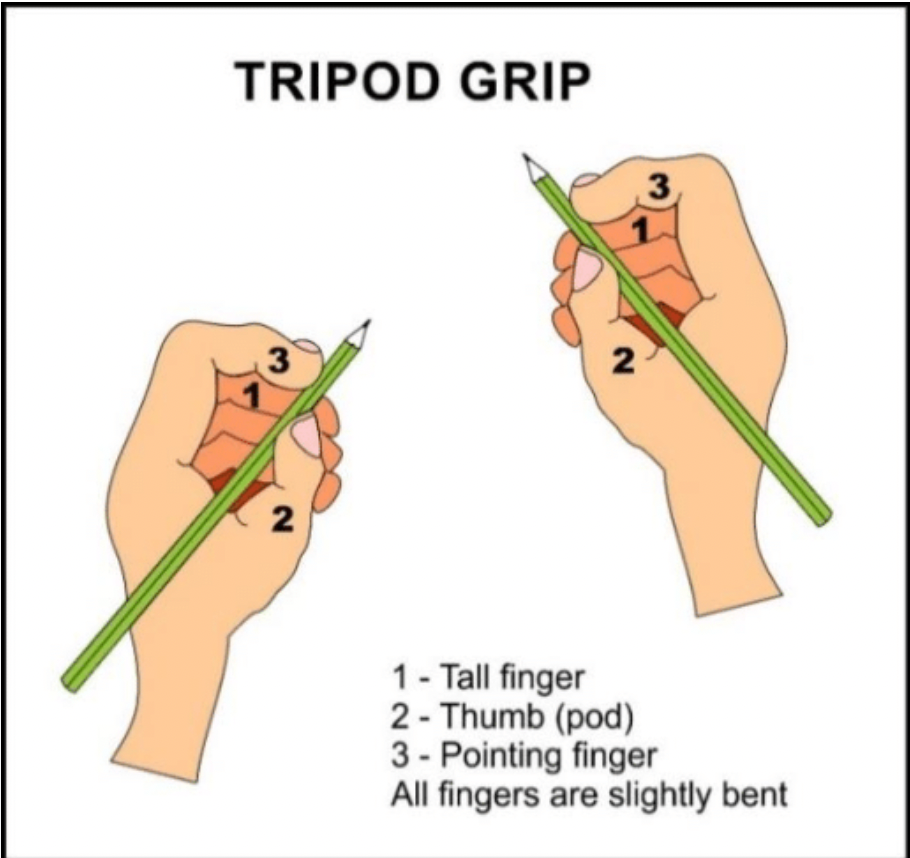For most of us, typing has become second-nature. In fact, most of us probably do not write anything anymore, until the exam calls for it.
Without practicing writing on a regular basis, it is likely that your handwriting might not be legible, especially if you are writing quickly. Let us help you work on that for your next exam!
Why is Good Handwriting Important?
1. Maximise your Marks
Believe it or not, the marker actually needs to be able to read your exam to assess you accordingly and give you the fairest mark. Do not get me wrong – the time spent studying, frantically jotting down answers to practice questions, is super important. However, come exam day, if the marker cannot read that really good sentence that you spent hours finessing, you would have unfortunately wasted your time!
Efficient but legible handwriting is often overlooked – but it is the key to getting the mark you deserve and ensuring those extra marks do not get lost in translation.
2. Learning Benefits
It might be easier or more time efficient to type up your notes or practice questions, but handwriting is directly linked to increased memory retention and learning. The brain power used to physically form the letters on the page (as opposed to simply hitting a key) is proven to maximise our ability to remember what we have written, in both the short and long term.
It might not be realistic to complete all your work in handwritten form, but completing the majority of your essays, practice questions and summary exercises (such as mind maps or concise, summarised notes) will seriously benefit you in the long term. While it might be a difficult transition at first (if you’re totally reliant on the keyboard), handwriting when you study will help build your hand strength, legibility and speed which you will need for your written exams.
How to Improve Handwriting?
1. Identify the Problem
First of all, it’s important to understand why your handwriting requires attention.
- Are your teachers and peers finding it difficult to read?
- Is your hand struggling to keep up with your thoughts when you go to write?
- Does your hand ache after you spend more than 20 minutes gripping the pen?
- Are your letters too slanted?
- Are letters too blended, making it hard to distinguish between each one?
- Are you forgetting to dot your Is and cross your Ts?!
These are all valid reasons as to why it is worth investing the time to improve your handwriting. You will often have no trouble deciphering what you have written on the page, so you should ask one of your friends or teachers why they are having trouble decoding your letters that look more like hieroglyphics.
Once you work out the root cause of your problematic handwriting, you can attack the problem and find your flow.
2. Work on your Grip
Checking your pen grip is another good start to addressing the problem. You should be holding your pen in the ‘tripod grip’ – using your thumb, index finger and middle finger.
Your thumb should be a little bent, with your index finger on the top and middle finger on the side of the pen. It is also important that your grip is not too tight as this will make your hand tired and cramped – make sure your grip is firm but relaxed.

Also, make sure you are not applying too much pressure to the page as this can contribute to messy letters and disrupt your flow!
3. Check your Posture
Bad posture could be another factor contributing to your poor handwriting – your back needs to be straight (no slouching!), feet firm on the floor with hips, knees and ankles at a 90 degree angle. Make sure you’re using a good chair that supports this position and allows your desk to match your waist height!
Use your other hand to secure the page, slightly tilting it towards your writing hand. This correct posture will prevent joint fatigue and ensure any muscle strain is evenly distributed.
4. Use a Good Pen
Make sure you find the pen that’s right for you and supports your handwriting style. As a left-hander myself, it was super important that my pen had minimal smudging but was still smooth enough to allow me to write in cursive and FAST!
Also look for pens with a rubber grip that can minimise pressure on your fingers. Finding the perfect pen might involve some trial and error but you’ll know when you find your match!
5. Strengthen your Hand Muscles
Maybe you have come across the classic battery hack – adding weight to your pen while you practise can help build up your hand strength so that when exam day rolls around and you remove the weight, you’re writing at lightning speed.
Just make sure that you do not add too much weight too quickly; treat it as if you were at the gym. You are not going to bench 100kg on your first day, so build up your hand muscles little by little too.
6. Spend time writing Slowly and Neatly, then build up your Speed
If you spend all your time practicing handwriting with the goal of writing as quickly as possible, naturally you are going to neglect legibility (which is just as, if not more, important).
Dedicate certain tasks to writing as neatly as possible, paying attention to everything we mentioned earlier – grip, posture, spacing of letters etc. Once you feel like you have got your legibility under control, start to slowly increase your speed without impacting the legibility.
Conclusion
Improving your handwriting will require time and practice, so it is advisable that you try to practice your handwriting as frequently as possible (I’m talking every day if you can!). If you're requiring some extra assistance, we can hook you up with one of our amazing tutors who can help keep your handwriting and study on track!
FAQs
Will I get Penalized for Bad Handwriting?
- Technically, no. Examiners mark based on the content you've written.
- The issue is, however, if they are not able to read what you've written, they cannot mark it. So you lose out on those marks
What Pens are good for writing?
- That is up to you. Based on a lot of comments on Reddit, the popular choices seem to be Muji pens and Uniball pens.
- Try writing with different kinds and see what suits you best.
Looking for more practical study tips? Check these articles out:










